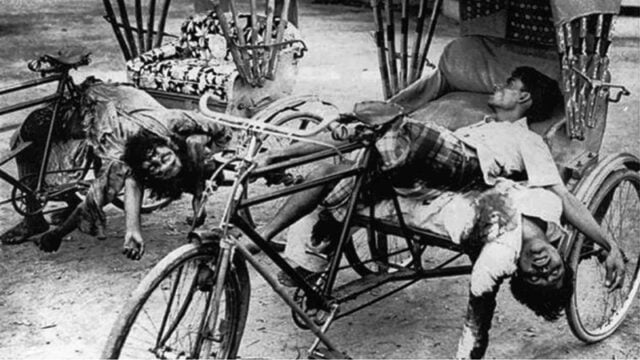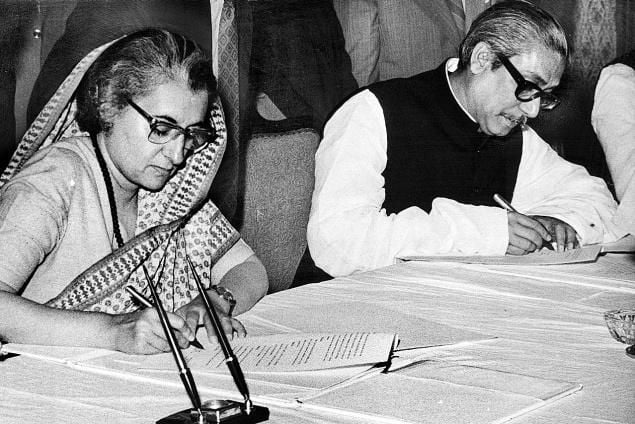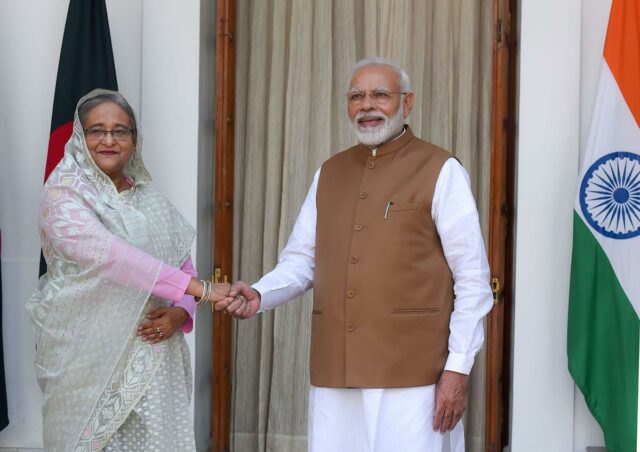Bangladesh has gone through tremendous change through its years of existence. It would be difficult to write them off as a future powerhouse since they already have surpassed and/or are competing with the present dynamos of the subcontinent with relative ease.
Donning the cap of one of the fastest-growing economies in the past decade, the country has established itself as a highly effective industrial hub for the changing times.
During the entire course of Bangladesh’s sovereignty, it has almost always found itself on the side of India. The golden pages of history have been fair witness to the diplomatic ties established between the two countries through thick and through thin. Thus, it is only fair to look at their relationship that has been as beautiful and as reciprocatory through the 50 years of its existence.
1971: The War That Started It All
Ceding former East Bengal into Pakistan was always a logistical failure owing to the sole reason that neither of the regions understood each other. The fact that the British declared the region of East Bengal as a part of Pakistan was always supposed to be a failure.
Possibly, the Bengali demographic of the region was supposed to take the fact of being under Pakistani governance with a grain of salt. However, as the Bangladesh cricket team’s logo indicates, the tiger only needed a slight nudge to wake it up from its slumber.
The Pakistani government had made it fairly obvious that the Bengali populace of East Pakistan would be living in the country as second class citizens the moment Jinnah declared “Urdu and Urdu alone,” would be the language of the State.
As Rahman took to the streets in 1948 fighting to revolt against the jingoism of the Pakistanis, alongside the student body of his alma mater, Dhaka University, he got the first taste of brutality as the police opened fire upon the protestors. The itchy trigger finger of the Jinnah led government had already set the stage for a country divided to the extremes.

However, it was during General Yahya Khan’s presidency that the situation worsened, for it is through fear that oppressors claim what isn’t theirs. The script flipped over itself with the election season as the Awami League, led by Rahman, won a thumping majority in the East Pakistan Parliament.
However, with Pakistan still holding the reins of the game, they convened the elections as null and void, to save Zulfiqar Ali Bhutto’s party, Pakistan People’s Party’s defeat be a bit less hurtful.
Thus, came about Yahya’s Operation Searchlight, an operation for Bengali genocide that aimed to use fear as its weapon against the spirit of the Bengali revolutionaries. The massacre had reportedly resulted in the deaths of 7000 unarmed Bengali civilians under the orders of the Butcher of Bangladesh, Lt. General Tikka Khan, in a single night.
The orders were not confined to committing manslaughter but also targeting the womenfolk as mass rape had become their weapon. As stated in Frank Jacob’s book, “Genocide And Mass Violence In Asia;”
“The policy was driven in the hopes of psychologically breaking the men and women of Bengali society.”

This led to a mass exodus of Bengali refugees sieving through the borders of West Bengal and into India. The influx of refugees was enough for the Indian Government, led by then Prime Minister Indira Gandhi, to ready itself for war.
Also Read: Demystified: Anti-Hindu Violence In Bangladesh: Why Minorities In Bangladesh Continue To Face Persecution?
A Start To Indo-Bangladesh Relations
As Mujibur Rahman’s Mukti Bahini went ahead with their fight for independence on the frontlines, Indira Gandhi’s government waited for the perfect time to strike. Supplying the provisional government of Bangladesh with sufficient resources to ward away the imperialistic forces of Pakistan’s military personnel, the guerilla fight was enough to keep them at bay.
It was on the 3rd of December, 1971, that Pakistan became the catalyst for India to participate in the war. The Pakistan Air Force had effectively bombed nine Air Bases in India which enabled Gandhi to maintain her stance of non-aggression while also handling international as well as domestic naysayers relatively well.
“For over nine months the military regime of West Pakistan has barbarously trampled upon freedom and basic human rights in Bangladesh…Everywhere the people showed sympathy and understanding for the economic and other burdens and danger to India. But governments seemed morally and politically paralysed.”

With such resolve, she addressed the Parliament and the rest as they say is history. The Indian Armed Forces combined with Rahman’s Mukti Bahini, forming the Bangladesh-India Allied Forces, and went on the front foot. India retaliated in a multi-pronged attack on Dhaka and within the space of two days, Gandhi declared Bangladesh an independent nation.
Within the 16th of December, 1971, 93,000 Pakistani military and governmental personnel led by Lt. General Niazi ceded defeat and accepted surrender before the Indian Army. The war became known as India’s greatest military achievement. However, coupled with that it was also the beginning of a great alliance between the two countries, India and Bangladesh.
How Are Indo-Bangladesh Relations Now?
India and Bangladesh have always fit like a hand would a glove, however, in recent years there have been growing concerns among the Indian populace concerning the dwindling number of minorities in Sheikh Hasina’s country.
The East Asia Forum, in an article, stated that during Durga Puja around 80 of the 32,000 makeshift temples had been attacked and vandalised in Bangladesh. Coupled with that figure, over 36,000 attacks had been recorded in the country on religious minorities in a time period spanning 2013 to 2021. It would only be fair to state that the ruling party at the helm has turned a blind eye to most of these instances.
However, the Indian government would disagree as they turned deaf and dumb when addressing the recent surge in minority violence in the neighbouring country.
Thus, taking that fact into consideration they do fit like a glove. The parallels can be drawn in the self-same way when the Indian government itself turns a blind eye to the wide array of minority violence prevalent in our country.

Addressing the bilateral relations present between the two countries, Foreign Secretary, Harsh Vardhan Shringla, stated that India and Bangladesh are a ‘role model’ in international relations. He further stated;
“India-Bangladesh relations today are deeper than any other strategic partnership. It is a role model for relations between two neighbouring countries. The spirit of friendship, understanding and mutual respect engendered during the liberation of Bangladesh continues to permeate different aspects of this relationship.”
However, the mutual relationship does not limit itself to being one on the grounds of how much they can accurately mimic the three monkeys but also when it comes to trade relations, India and Bangladesh have always heeded each others’ call.
According to data, Bangladesh is purportedly India’s biggest trade partner in South Asia. For the financial year of 2018-19, India recorded an export value of 9.21 billion USD to Bangladesh while recording an import of 1.22 billion USD. Shringla emphasized upon this fact as well as he stated;
“Bangladesh is India’s biggest development partner and India’s largest trading partner in South Asia, contributing to economic prosperity and supply chain resilience in the region and beyond.”

All in all, the basic relationship between them has always been a thing for the history books. Although human rights have gone for a toss in the past couple of years, it has never bothered either of the governments to show up for the responsibility of running a federal republic.
Image Sources: Google Images
Sources: The Print, The Hindu, Ministry of External Affairs
Connect with the blogger: @kushan257
This post is tagged under: Anti-Hindu movement, Bangladesh, violence, anti-Hindu violence in Bangladesh, black day of Bangladesh, Durga puja, Durga puja tragedy in Bangladesh, minorities, minority violence, violence faced by the minorities, minor religious groups, Dalit Indians, Hindus in Bangladesh, minor women, dominant religious groups, Hindu community, Durga puja celebrations in Bangladesh, India, India minorities, 50 years of Bangladesh, 50 years of India Bangladesh relations, Narendra modi, 1971 India Pakistan, Pakistan, India Pakistan war, Bangladesh liberation war, mujibur rahman, sheikh hasina































